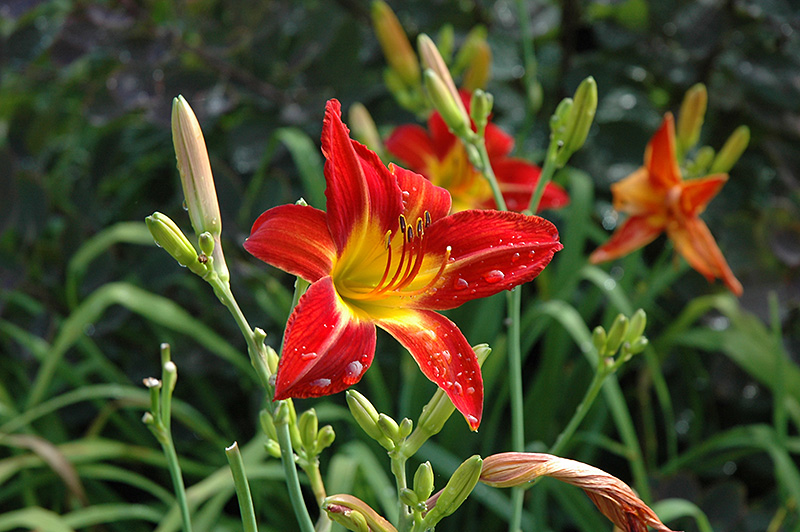Know Before You Go!
Get notified before our plants arrive in stores near you.
Plant Care Library
Plant Height: 30 inches
Flower Height: 4 feet
Spacing: 18 inches
Sunlight:
![]()
![]()
Hardiness Zone: 2b
Description:
This late season bloomer is sure to turn heads with its fire red petals and bright yellow throats; low maintenance with excellent heat and drought tolerance; great for perennial borders and beds
Ornamental Features
August Flame Daylily features bold tomato-orange trumpet-shaped flowers with yellow throats at the ends of the stems from mid to late summer. The flowers are excellent for cutting. Its grassy leaves remain green in color throughout the season.
Landscape Attributes
August Flame Daylily is an herbaceous perennial with tall flower stalks held atop a low mound of foliage. Its relatively fine texture sets it apart from other garden plants with less refined foliage.
This is a relatively low maintenance plant, and is best cleaned up in early spring before it resumes active growth for the season. It is a good choice for attracting butterflies to your yard. It has no significant negative characteristics.
August Flame Daylily is recommended for the following landscape applications;
- Mass Planting
- Rock/Alpine Gardens
- Border Edging
- General Garden Use
- Groundcover
Planting & Growing
August Flame Daylily will grow to be about 30 inches tall at maturity extending to 4 feet tall with the flowers, with a spread of 24 inches. When grown in masses or used as a bedding plant, individual plants should be spaced approximately 18 inches apart. It grows at a medium rate, and under ideal conditions can be expected to live for approximately 10 years. As an herbaceous perennial, this plant will usually die back to the crown each winter, and will regrow from the base each spring. Be careful not to disturb the crown in late winter when it may not be readily seen!
This plant does best in full sun to partial shade. It is very adaptable to both dry and moist locations, and should do just fine under typical garden conditions. It is not particular as to soil type or pH. It is highly tolerant of urban pollution and will even thrive in inner city environments. This particular variety is an interspecific hybrid. It can be propagated by division; however, as a cultivated variety, be aware that it may be subject to certain restrictions or prohibitions on propagation.
A NetPS Plant Finder tool

